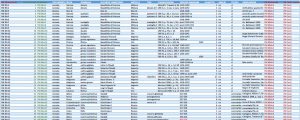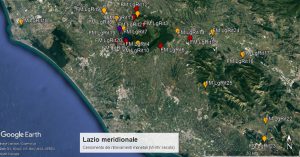The census of coin finds along the Tyrrhenian coast of central Italy stems from the idea that nEU-Med project could be integrated in regards to some aspect of the ancient economy, in particular use of coins, extending the geographic and temporal scale of the survey. Archaeological excavations in Vetricella (Scarlino) have led to the discovery of a number of silver coins datable between the last quarter of the IX century and the principle of XI century, opening to the hypothesis of a strong economic vocation of the site and the area under investigation.
In order to be able to evaluate the significance of such coin findings, a census for the Tuscan region is in progress.
However, to try to interpret in their complexity these data, still being defined, it was considered useful to create the conditions for a comparative approach.
The aim of this survey of coin finds is therefore to draw a picture of the findings of coins extending along the Tyrrhenian coastal area from Gulf of Salerno to Gulf of Genoa, involving Sardinia and Corsica, for a vast chronological arch (VI-XIV century), within which contextualize economic data brought to light by nEU-Med project.
For this purpose, we have created a database (fig. 1) in which systemize and standardize a significant amount of published and unpublished data appropriately screened in accord to their characteristics, peculiarity and critical points (methods of discovery and collection, survey techniques, interpretation and chronology of context, stratigraphic reliability and dependability of coin’s classification, etc.).

Investigation on published data is affecting both the monographic editions of archaeological excavations and research and journals of archaeology (Notizie degli Scavi di Antichità, Archeologia Medievale, Papers of the British School at Rome etc) and numismatics (Annali dell’Istituto Italiano di Numismatica, Rivista Italiana di Numismatica, Numismatica e Antichità Classiche e Bollettino di Numismatica, just to remember Italian journals).
In addition, we also have tools available online, as Repertorio dei ritrovamenti di moneta Altomedievale in Italia (489-1002) edited by E. Arslan and as Inventory of coin finds – Italy compiled by L. Gianazza.
This data collection will allow us to obtain, as a first result, quantitative data and diversified maps with the distribution of finds (fig. 2).



